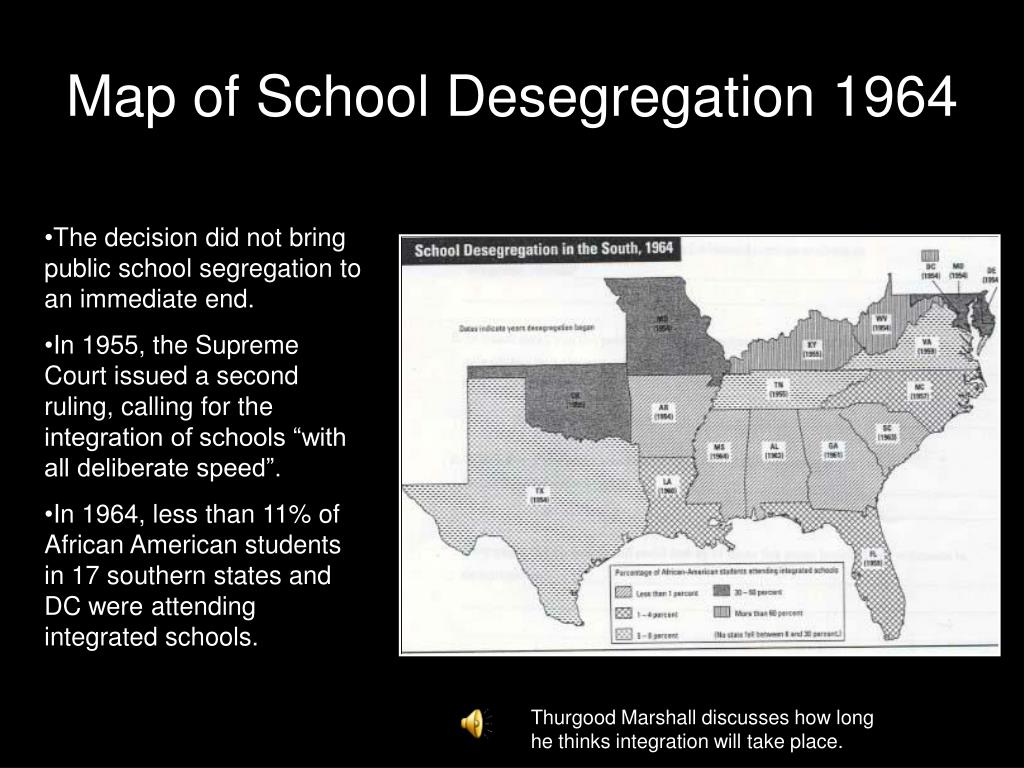End Of School Desegregation Order: Implications And Future Of School Diversity

Table of Contents
School desegregation, the process of ending racial segregation in schools, has a long and complex history in the US, rooted in the landmark Brown v. Board of Education Supreme Court case of 1954. While significant progress has been made, the legacy of segregation continues to cast a long shadow on our schools. This article aims to analyze the implications of the current trend towards ending court-ordered desegregation and explore pathways towards creating more inclusive and diverse learning environments for all students.
Impact on Student Demographics: Segregation's Lingering Shadow
The end of desegregation orders risks exacerbating existing racial and socioeconomic segregation in schools. Without court-mandated integration efforts, many schools are likely to reflect the residential segregation patterns prevalent in their surrounding communities. This can lead to a concentration of minority students in specific schools, often those with fewer resources and lower academic performance.
Statistics paint a concerning picture. For example, according to the UCLA Civil Rights Project, school segregation has been increasing in many parts of the country in recent years. This resurgence of segregation directly impacts student outcomes.
- Increased concentration of minority students in specific schools: This creates environments where students from underrepresented groups may lack exposure to diverse perspectives and opportunities.
- Potential widening of achievement gaps between different student populations: Resource disparities between schools often correlate with racial and socioeconomic segregation, hindering the academic progress of students in under-resourced schools.
- Impact on social integration and intergroup relationships: Limited exposure to diverse peers can impede the development of crucial social skills and understanding across different racial and socioeconomic groups.
- Geographic disparities in school resources and quality: Schools in predominantly minority or low-income neighborhoods often lack the funding and resources to provide high-quality education, perpetuating the cycle of inequality.
Socioeconomic Factors and School Segregation: A Complex Interplay
Even without explicit segregation orders, socioeconomic disparities significantly contribute to school segregation. Housing segregation, often driven by historical and ongoing discriminatory practices, plays a crucial role in shaping school district boundaries and demographics.
- The role of property values and housing costs in shaping school demographics: High property values in affluent neighborhoods often translate to better-funded schools, creating a system where wealth influences access to quality education.
- Impact of wealth disparities on access to quality education (private schools, tutoring, etc.): Families with more financial resources can afford private schools or supplemental educational services, exacerbating the educational divide.
- The influence of neighborhood-level factors on school performance: Factors such as access to healthcare, safe environments, and parental involvement, often correlated with socioeconomic status, significantly influence school success.
Legal Challenges and Future Litigation: Navigating the Complexities of School Diversity
The legal arguments surrounding mandated school desegregation are complex and often contested. While proponents emphasize the importance of equal protection under the law and the need to actively dismantle the legacy of segregation, opponents argue against what they see as government overreach and the infringement on parental choice.
Ending desegregation orders may lead to new legal challenges.
- Challenges to equal protection clauses of the constitution: Lawsuits may arise alleging that the lack of desegregation efforts violates students' constitutional rights to equal educational opportunities.
- The role of the courts in ensuring educational equity: Courts will play a vital role in determining the extent to which school districts must actively promote diversity and address the lingering effects of segregation.
- Potential lawsuits related to discriminatory housing policies and their impact on schools: Legal actions may target housing policies that perpetuate segregation and contribute to unequal school distributions.
Promoting School Diversity: Strategies and Solutions for the Future
Despite the challenges, several strategies can promote school diversity without mandated desegregation.
- Magnet schools and specialized programs: These programs can attract students from diverse backgrounds and create more integrated learning environments.
- School choice programs and their potential implications for segregation: While school choice can offer benefits, careful implementation is crucial to avoid exacerbating segregation. Mechanisms need to prevent the concentration of students from specific backgrounds in certain schools.
- Inter-district transfers and busing initiatives: These measures can help create more diverse student populations across different school districts, though they often face logistical and political hurdles.
- Affordable housing policies and their impact on school diversity: Policies that promote affordable housing in diverse neighborhoods can contribute to more integrated school demographics.
- Community-based initiatives to foster integration: Local community involvement in promoting diversity and inclusivity in schools is crucial.
Securing a Diverse Future: The Ongoing Fight for Educational Equity
The end of school desegregation orders doesn't signal the end of the fight for school diversity. The analysis presented here highlights the complex interplay of legal, social, and economic factors affecting school segregation. Addressing socioeconomic disparities is crucial to achieving genuine school integration. We must actively work towards creating truly inclusive educational environments for all children. Learn more about how you can advocate for school diversity and contribute to creating a more equitable future by researching local initiatives and supporting organizations dedicated to educational equity. The pursuit of school diversity is an ongoing journey that demands our collective commitment.

Featured Posts
-
 Leaked Whats App Messages Expose Reform Party Rift
May 02, 2025
Leaked Whats App Messages Expose Reform Party Rift
May 02, 2025 -
 Understanding Pasifika Sipoti April 4th Edition
May 02, 2025
Understanding Pasifika Sipoti April 4th Edition
May 02, 2025 -
 Reform Uks Rupert Lowe Police Report Filed Over Bullying Allegations
May 02, 2025
Reform Uks Rupert Lowe Police Report Filed Over Bullying Allegations
May 02, 2025 -
 Assams Nrc Cms New Measures For Aadhaar Cardholders Outside The List
May 02, 2025
Assams Nrc Cms New Measures For Aadhaar Cardholders Outside The List
May 02, 2025 -
 Eco Flow Wave 3 Review Strengths Weaknesses And Verdict
May 02, 2025
Eco Flow Wave 3 Review Strengths Weaknesses And Verdict
May 02, 2025
Latest Posts
-
 Nostalgia Trip Sony Brings Back Retro Ps Console Themes For Ps 5
May 03, 2025
Nostalgia Trip Sony Brings Back Retro Ps Console Themes For Ps 5
May 03, 2025 -
 Jw 24 Dlyl Shaml Hwl Blay Styshn 6
May 03, 2025
Jw 24 Dlyl Shaml Hwl Blay Styshn 6
May 03, 2025 -
 Ps 5 Gets A Blast From The Past Classic Play Station Console Themes Return
May 03, 2025
Ps 5 Gets A Blast From The Past Classic Play Station Console Themes Return
May 03, 2025 -
 Unreleased 2008 Disney Game Surfaces On Ps Plus Premium
May 03, 2025
Unreleased 2008 Disney Game Surfaces On Ps Plus Premium
May 03, 2025 -
 Register For The Sony Play Station Beta Program Full Requirements Explained
May 03, 2025
Register For The Sony Play Station Beta Program Full Requirements Explained
May 03, 2025
